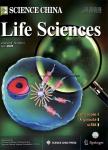版权所有:内蒙古大学图书馆 技术提供:维普资讯• 智图
内蒙古自治区呼和浩特市赛罕区大学西街235号 邮编: 010021

作者机构:Institute for Regenerative MedicineState Key Laboratory of Cardiology and Medical Innovation CenterShanghai East HospitalFrontier Science Center for Stem Cell ResearchSchool of Life Sciences and TechnologyTongji University
出 版 物:《Science China Life Sciences》 (中国科学:生命科学(英文版))
年 卷 期:2025年第68卷第5期
页 面:1369-1383页
核心收录:
学科分类:1007[医学-药学(可授医学、理学学位)] 1006[医学-中西医结合] 100706[医学-药理学] 100602[医学-中西医结合临床] 10[医学]
基 金:supported by the National Key R&D Program of China (2020YFA0112500, 2019YFA0110000) the National Natural Science Foundation of China (31970820) the Key Project of the Science and Technology of Shanghai Municipality (19JC1415300) the Fundamental Research Funds for the Central Universities (22120240435) Peak Disciplines (Type Ⅳ) of Institutions of Higher Learning in Shanghai
主 题:inner ear organoid hair cell protection ototoxic drugs
摘 要:Hair cells in the mammalian cochlea are highly vulnerable to damage from drug toxicity, noise exposure, aging, and genetic mutations, with no capacity for regeneration. Progress in hair cell protection research has been limited by the scarcity of cochlear tissue and suitable in vitro models. Here, we present a novel one-step, self-organizing inner ear organoid system optimized with small molecules, which bypasses the need for multi-step expansion and forced differentiation protocols. This approach efficiently generates hair cells and supporting cells that recapitulate the molecular, cellular, and structural characteristics of the inner ear. Single-cell RNA sequencing revealed the diversity and fidelity of cell populations within the organoids. Utilizing this platform, we validated the protective effects of candidate compounds against hair cell damage, highlighting its potential as a powerful tool for drug discovery and mechanistic studies of hair cell protection.